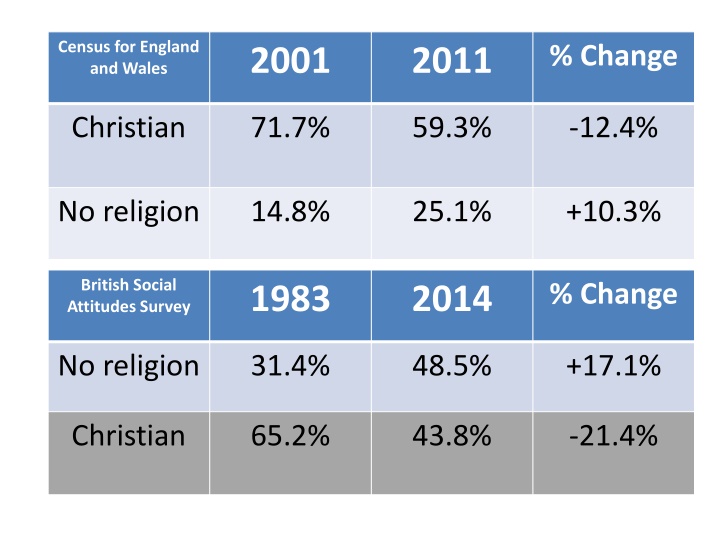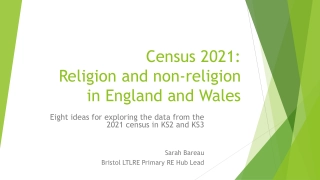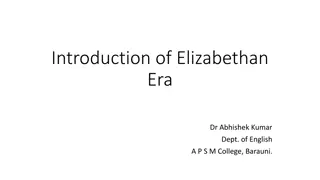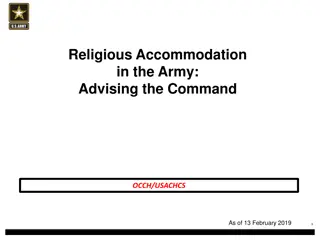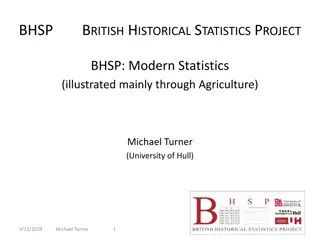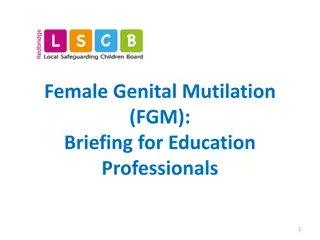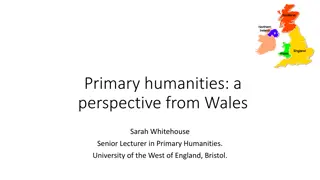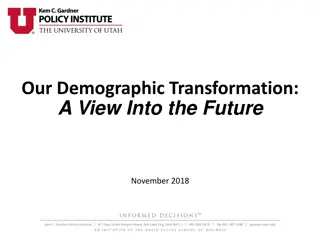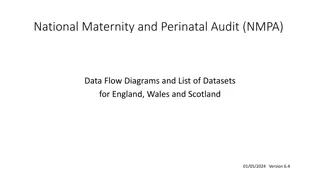Religious Trends and Demographic Changes in England and Wales
Analysis of the shift in religious affiliations in England and Wales from the 2001 census to recent years, including changes in church attendance, denominations, and immigration-assisted growth. The data reveals a decline in Christian denominations, particularly Anglicans, and a rise in those identifying as having no religion or belonging to smaller church groups.
Download Presentation

Please find below an Image/Link to download the presentation.
The content on the website is provided AS IS for your information and personal use only. It may not be sold, licensed, or shared on other websites without obtaining consent from the author.If you encounter any issues during the download, it is possible that the publisher has removed the file from their server.
You are allowed to download the files provided on this website for personal or commercial use, subject to the condition that they are used lawfully. All files are the property of their respective owners.
The content on the website is provided AS IS for your information and personal use only. It may not be sold, licensed, or shared on other websites without obtaining consent from the author.
E N D
Presentation Transcript
Census for England and Wales % Change 2001 2011 Christian 71.7% 59.3% -12.4% No religion 14.8% 25.1% +10.3% British Social Attitudes Survey % Change 1983 2014 No religion 31.4% 48.5% +17.1% Christian 65.2% 43.8% -21.4%
Anglicans 1983 44.5% 2014 19.0%
Denomination 2008 % change 2008-2013 2013 % change 2013-2020 2020 est Anglican 1,436,329 -5% 1,362,855 -9% 1,241,695 Baptist 208,488 -9% 189,152 -8% 174,873 Catholic 1,611,954 -13% 1,399,942 -19% 1,128,800 Independent 232,281 +3% 239,709 +4% 249,273 Methodist 270,832 -15% 231,357 -24% 176,160 New churches 195,993 +9% 212,911 +10% 234,155 Orthodox 390,659 +19% 464,194 +11% 514,585 Pentecostal 358,370 +21% 432,687 +25% 541,954 Presbyterian 814,669 -20% 649,067 -30% 455,367 Smaller groups 155,425 +18% 182,723 +16% 211,883 Fresh expressions 19,300 +273% 71,900 +50% 108,200 ALL CHURCHES 5,694,300 -5% 5,436,497 -7% 5,036,945
London 2005 2012 Church attendance 620,000 720,000 Churches closing Churches opening 2005-2012 300 1,000
Anglicans over 70 Anglicans 16-25 50% 5% Babies christened in an Anglican church 1950 2011 67% 12%
Immigrant assisted growth 2008-2013 The Patriarchate of Romania (18,000; +233%) The Russian Orthodox Church Outside Russia (15,000; +27%) The Armenian Orthodox Church (16,000; + 44%) The Redeemed Christian Church of God (62,000; +64%) Smaller African and Caribbean Churches (20,000; +19%) Other smaller Pentecostal Churches (26,000; +27%) The Seventh-Day Adventists (28,000; +21%) Lutheran Churches in total (27,000; +24%)
Greatest decline 2008-2013 The Church in Wales (66,000; -17%) The Scottish Episcopal Church (38,000; -16%) The Baptist Union of Wales (15,000; -16%) The Roman Catholic Church in Scotland (186,000; -18%) The Roman Catholic Church in N Ireland (478,000; -20%) The Union of Welsh Independents (30,000; -23%) The Methodist Church of Great Britain (252,000; -15%) The Presbyterian Church of Wales (29,000; -18%) The Church of Scotland (475,000; -29%)
1. The widely reported decline in Christianity, is actually a decline in nominalism. Only 50% of clergy from declining churches agreed it was very important to encourage non-Christians to become Christians , compared to 100% of clergy from growing churches. 71% of clergy from growing churches read the Bible daily compared with 19% from declining churches. 46% of people attending growing churches read the Bible once a week compared with 26% from declining churches. 93% of clergy and 83% of worshippers from growing churches agreed with the statement Jesus rose from the dead with a real flesh-and-blood body leaving behind an empty tomb . This compared with 67% of worshippers and 56% of clergy from declining churches.
1. The widely reported decline in Christianity, is actually a decline in nominalism. 2. The British situation is unique, neither American nor European.
1. The widely reported decline in Christianity, is actually a decline in nominalism. The British situation is unique, neither American nor European. 2. 3. The rapid growth in secularism is accompanied by a rapid growth in spirituality .
1. The widely reported decline in Christianity, is actually a decline in nominalism. The British situation is unique, neither American nor European. The rapid growth in secularism is accompanied by a rapid growth in spirituality . 2. 3. 4. The place of privacy and the place of community.
1. Build multi-cultural churches. 2.Think strategically.
1. Build multi-cultural churches. 2. Think strategically. 3.Consider bi-vocational ministry.
1. Build multi-cultural churches. 2. Think strategically. 3. Consider bi-vocational ministry. 4.Revitalise where appropriate.
